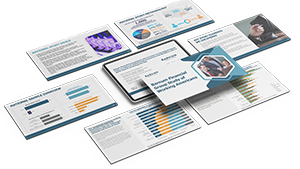
If you’re a decade or so away from retirement, you’ve probably spent at least some time thinking about this major life change. How will you manage the transition? Will you travel, take up a new sport or hobby, or spend more time with friends and family? Should you consider relocating? Will you continue to work in some capacity? Will changes in your income sources affect your standard of living?
When you begin to ponder all the issues surrounding the transition, the process can seem downright daunting. However, thinking about a few key points now, while you still have years ahead, can help you focus your efforts and minimize the anxiety that often accompanies the shift.
Reassess your living expenses
A step you will probably take several times between now and retirement — and maybe several more times thereafter — is thinking about how your living expenses could or should change. For example, while commuting and other work-related costs may decrease, other budget items may rise. Health-care costs, in particular, may increase as you progress through retirement.
Try to estimate what your monthly expense budget will look like in the first few years after you stop working. And then continue to reassess this budget as your vision of retirement becomes reality.
According to a recent survey, 40% of retirees said they were “very confident” that they would be able to meet their basic expenses in retirement, while only 30% showed similar levels of confidence in meeting health-care costs.1 Keeping a close eye on your spending in the years leading up to retirement can help you more accurately anticipate your budget during retirement.
Consider all your income sources
First, figure out how much you stand to receive from Social Security. The amount you receive will depend on your earnings history and other unique factors. You can elect to receive retirement benefits as early as age 62, however, doing so will result in a reduced benefit for life. If you wait until your full retirement age (66 or 67, depending on your birth date) or later (up to age 70), your benefit will be higher. The longer you wait, the larger it will be.2
You can get an estimate of your retirement benefit at the Social Security Administration website, ssa.gov. You can also sign up for a my Social Security account to view your online Social Security statement, which contains a detailed record of your earnings and estimates for retirement, survivor, and disability benefits. Your retirement benefit estimates include amounts at age 62, full retirement age, and age 70. Check your statement carefully and address any errors as soon as possible.
Retirement Income
Next, review the accounts you’ve earmarked for retirement income, including any employer benefits. Start with your employer-sponsored plan, and then consider any IRAs and traditional investment accounts you may own. Try to estimate how much they could provide on a monthly basis. If you are married, be sure to include your spouse’s retirement accounts as well. If your employer provides a traditional pension plan, contact the plan administrator for an estimate of that monthly benefit amount.
Do you have rental income? Be sure to include that in your calculations. Might you continue to work? Some retirees find that they are able to consult, turn a hobby into an income source, or work part-time. Such income can provide a valuable cushion that helps retirees postpone tapping their investment accounts, giving the assets more time to potentially grow.
Some other ways to generate extra cash during retirement include selling gently used goods (such as furniture or designer accessories), pet sitting, and participating in the sharing economy — e.g., using your car as a taxi service.
Pay off debt, power up your savings
Once you have an idea of what your possible expenses and income look like, it’s time to bring your attention back to the here and now. Draw up a plan to pay off debt and power up your retirement savings before you retire.
Why pay off debt? Entering retirement debt-free — including paying off your mortgage — will put you in a position to modify your monthly expenses in retirement if the need arises. On the other hand, entering retirement with a mortgage, loan, and credit-card balances will put you at the mercy of those monthly payments. You’ll have less of an opportunity to scale back your spending if necessary.
Why power up your savings? In these final few years before retirement, you’re likely to be earning the highest salary of your career. Why not save and invest as much as you can in your employer-sponsored retirement savings plan and/or IRAs? Aim for maximum allowable contributions. And remember, if you’re 50 or older, you can take advantage of catch-up contributions, which enable you to contribute an additional $7,500 to your 401(k) plan and an extra $1,000 to your IRA in 2024.
Manage taxes
As you think about when to tap your various resources for retirement income, remember to consider the tax impact of your strategy. For example, you may want to withdraw money from your taxable accounts first to allow your employer-sponsored plans and IRAs more time to potentially benefit from tax-deferred growth. Keep in mind, however, that generally you are required to begin taking minimum distributions from tax-deferred accounts once you reach age 73 (75 for those who reach age 73 after December 31, 2032), whether or not you actually need the money. (Roth IRAs are an exception to this rule.)
If you decide to work in retirement while receiving Social Security, understand that income you earn may result in taxable benefits. IRS Publication 915 offers a worksheet to help you determine whether any portion of your Social Security benefit is taxable.
If leaving a financial legacy is a goal, you’ll also want to consider how estate taxes and income taxes for your heirs figure into your overall decisions.
Managing retirement income to result in the best possible tax scenario can be extremely complicated. Qualified tax and financial professionals can provide valuable insight and guidance.3
Account for health care
The Employee Benefit Research Institute reported that the average 65-year-old married couple retiring in 2023, with median prescription drug expenses, would need about $351,000 in savings to have a 90% chance of meeting their insurance premiums and out-of-pocket health-care costs in retirement.4 This figure illustrates why health care should get special attention as you plan the transition to retirement.
As you age, the portion of your budget consumed by health-related costs (including both medical and dental) will likely increase. Although Original Medicare (Parts A and B) will cover a portion of your costs, you’ll still have deductibles, copayments, and coinsurance. Unless you’re prepared to pay for these costs out of pocket, you may want to purchase a supplemental Medigap insurance policy. Medigap policies are sold by private health insurers and are standardized and regulated by both state and federal law. These plans offer different levels of coverage and may pay many of your out-of-pocket costs.
Medicare Advantage
Another option is Medicare Advantage (also known as Medicare Part C), which is a bundled plan that includes Parts A and B, and usually Part D prescription coverage, and may offer additional benefits Original Medicare doesn’t cover. If you enroll in Medicare Advantage, you cannot also purchase a Medigap policy. For more information, visit medicare.gov.
Also think about what would happen if you or your spouse needed home care, nursing home care, or other forms of long-term assistance, which Medicare and Medigap will not cover. Long-term care costs vary substantially depending on where you live and can be extremely expensive. For this reason, people often consider buying long-term care insurance. Policy premiums may be tax deductible, based on a number of different factors. If you have a family history of debilitating illness such as Alzheimer’s, have substantial assets you’d like to protect, or want to leave assets to heirs, a long-term care policy may be worth considering.5
Ease the transition
These are just some of the factors to consider as you prepare to transition into retirement. Breaking the bigger picture into smaller categories and using the years ahead to plan accordingly may help make the process a little easier.
1Source: Employee Benefit Research Institute, 2023
2Note that if you work while receiving Social Security benefits and are under full retirement age, your benefits may be reduced until you reach full retirement age.
3Working with a tax or financial professional cannot guarantee financial success.
4Source: Employee Benefit Research Institute, 2024
5A complete statement of coverage, including exclusions, exceptions, and limitations, is found only in the LTC policy. It should be noted that carriers have the discretion to raise their rates and remove their products from the marketplace.
IMPORTANT DISCLOSURES
This material was prepared by Broadridge Investor Communication Solutions, Inc. This information is believed to be from reliable sources; however, no representation is made as to its accuracy or completeness. This information does not constitute tax or legal advice. It may not be relied on for the purpose of avoiding any Federal tax penalty. It is not a solicitation or recommendation to purchase or sell any insurance or investment product or service. Readers should not rely upon it as such. Readers should seek such advice from their own tax or legal counsel or financial professional. Securities, investment advisory and financial planning services through qualified registered representatives of MML Investors Services, LLC. Member SIPC. 6 Corporate Drive, Shelton, CT 06484. Tel: 203-513-6000.



